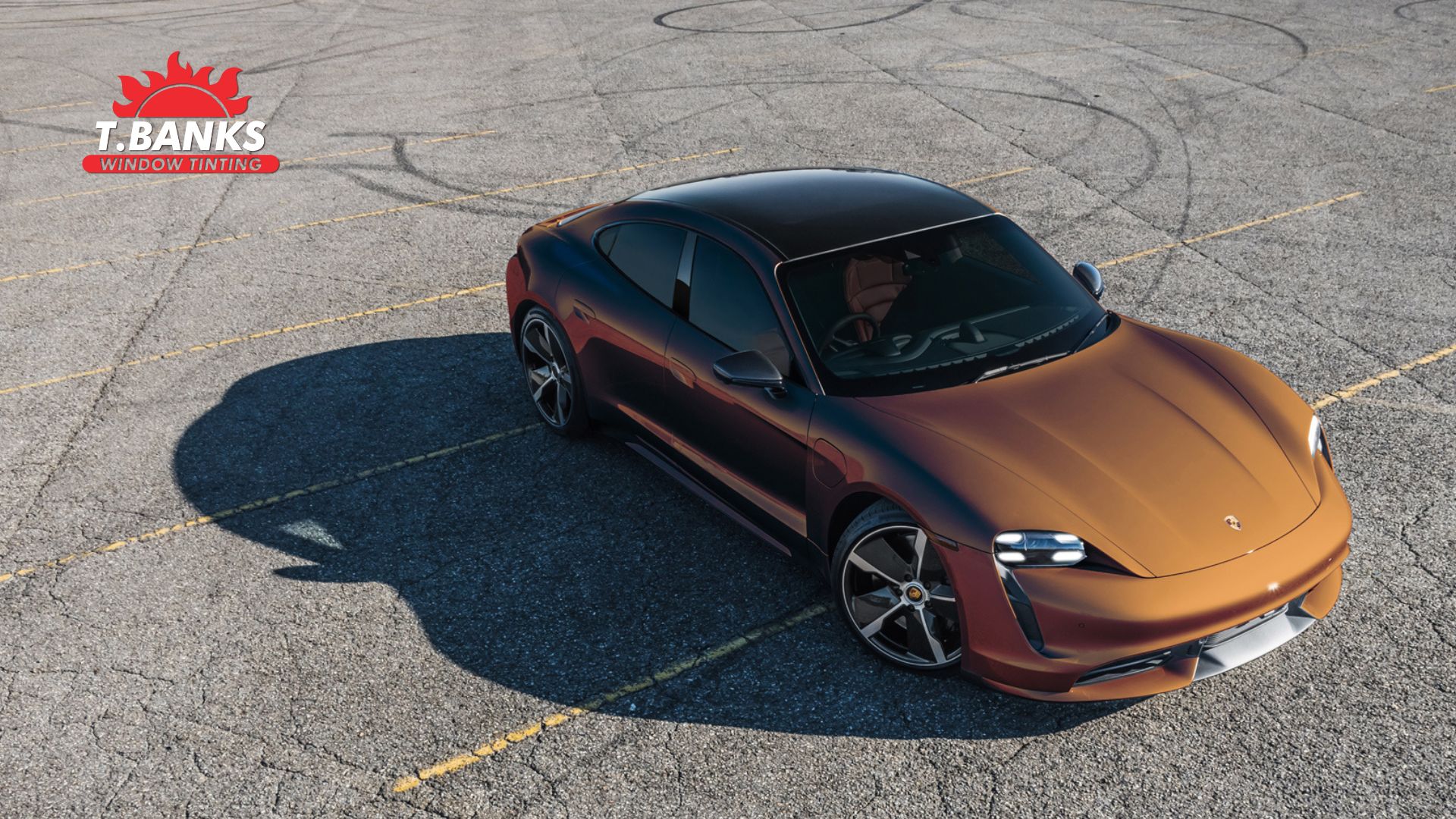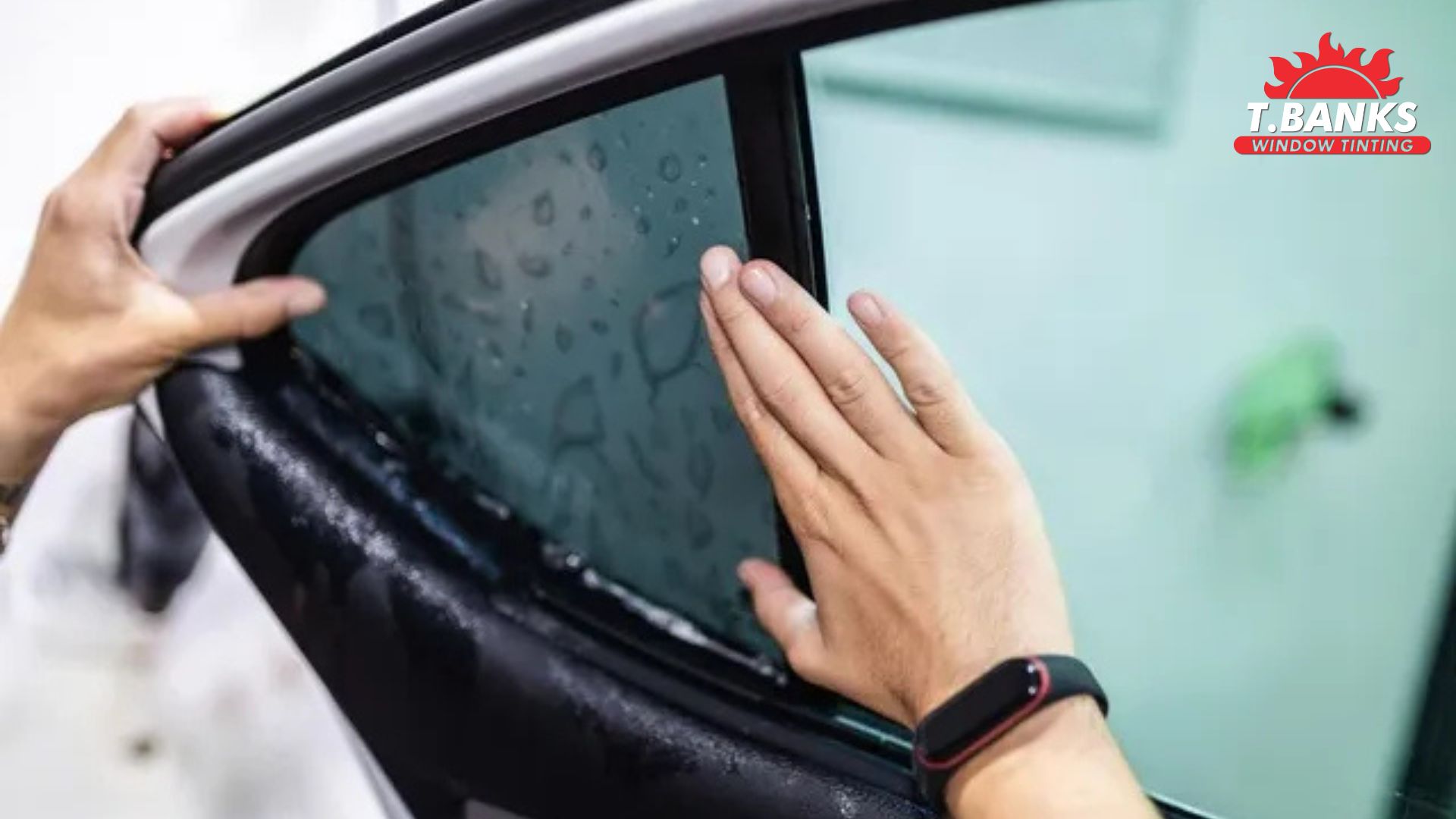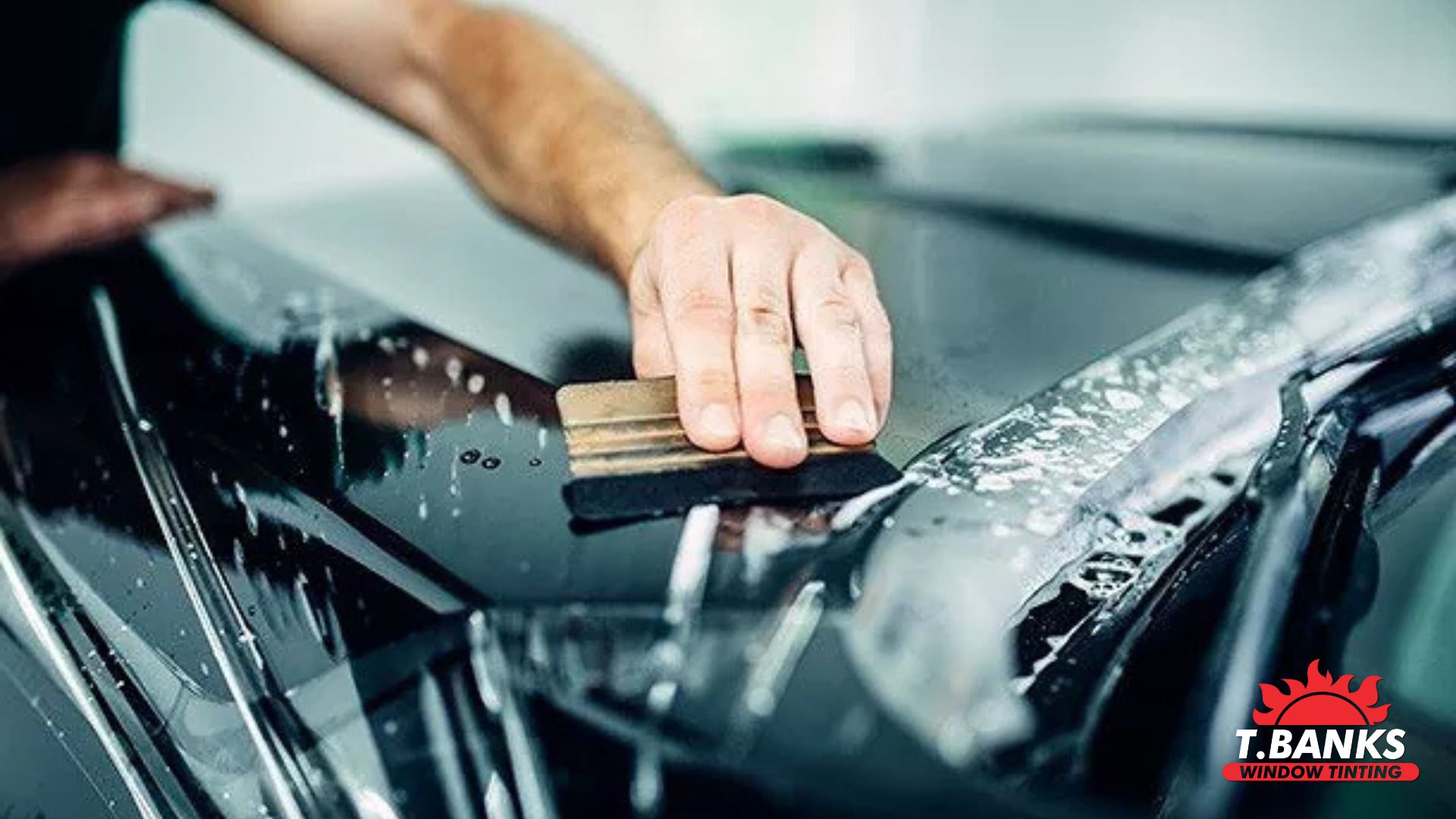If you live in Martinez, you already know how our roads and weather can treat your car’s exterior. Between the sticky summer humidity, clouds of spring pollen, and road debris from I-20 or Washington Road construction zones, your paint takes a beating. That’s why many drivers in our area turn to Paint Protection Film (PPF) for long-term protection. But once it’s installed, how do you take care of it? At T. Banks Window Tinting, we don’t just install PPF—we use it on our own vehicles. In this guide, we’ll walk you through the real-world steps to keep your PPF performing at its best, year after year.
What Paint Protection Film Is—and What It’s Designed to Do
Think of Paint Protection Film as your car’s invisible armor. It’s a clear, durable urethane film that adheres to the painted surfaces of your vehicle, creating a resilient shield against everyday hazards. That means no more stressing over rock chips, bug splatter on those highway commutes, UV rays during long parking lot stays, or light scratches from branches or road grime.
Here in Martinez, PPF isn’t just a luxury—it’s a smart choice. We’re surrounded by wooded areas, shifting weather patterns, and growing traffic from neighboring towns like Evans and Augusta. Whether you’re navigating suburban roads or driving through fresh construction zones, PPF installation gives you the peace of mind that your paint is covered.
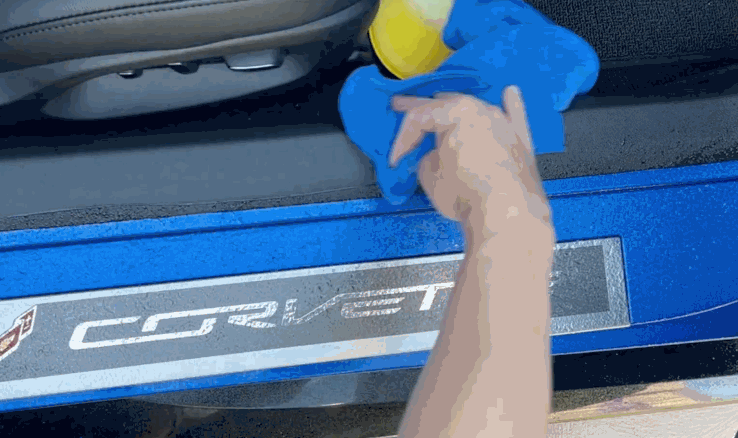
First 7 Days After PPF Installation: The Crucial Break-in Period
The first week after PPF installation is when the magic happens—literally. The film needs time to settle, adhere, and fully bond with your vehicle’s surface. During this “break-in” period, avoid:
- Washing the car
- Waxing or polishing
- Picking at the edges (even if you spot a bubble!)
Because of Georgia’s high humidity and frequent rain, the film may take a bit longer to cure. You might notice small bubbles or a slight haze—don’t panic. These are normal and typically disappear within a few days. However, if anything looks off after a week (like persistent tackiness or large bubbles), give us a call at T. Banks Window Tinting. We’re happy to take a look.
Washing Your Car with PPF: Best Practices
Once your Paint Protection Film has fully cured, regular washing becomes the single most important habit you can adopt to maintain its clarity, gloss, and longevity. And if you live in Martinez like we do, you know how quickly your car can go from clean to coated in pollen—especially in spring when everything turns yellow overnight.
But washing a car with PPF isn’t the same as washing an unprotected vehicle. The wrong products or techniques can dull the finish, lift the edges, or even shorten the lifespan of the film. That’s why we always recommend the following approach—based on both industry standards and what we’ve seen work right here in our shop.
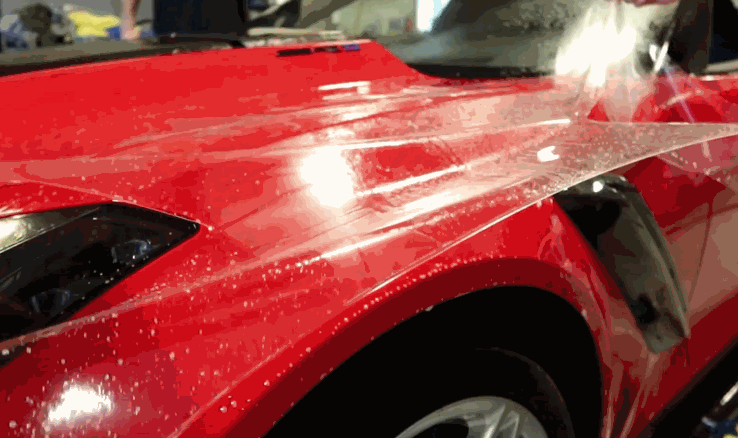
Use pH-neutral car shampoo
A pH-balanced shampoo is gentle on the film’s topcoat and won’t degrade its hydrophobic properties. Harsh detergents or degreasers may seem to clean better, but they can strip away the self-healing and water-repellent characteristics of the PPF. Look for shampoos specifically marked as “safe for wraps or films.” We keep a few favorites in the shop—feel free to ask us for recommendations.
Avoid automatic car washes with brushes
We know it’s tempting to swing by a gas station wash after a muddy weekend, but those spinning brushes are one of the fastest ways to scuff, scratch, or even lift the edges of your film. If you absolutely must use an automatic wash, opt for a touchless system—but even then, check what chemicals they’re using.
Wash early or in the shade
Georgia heat isn’t just uncomfortable—it speeds up evaporation and leaves behind stubborn water spots. Washing your car in direct sun on a hot afternoon can leave mineral deposits etched into the surface of your film. If you don’t have access to a shaded driveway, try to wash in the early morning or late afternoon when the sun is less intense.
At T. Banks Window Tinting, our maintenance checks aren’t about upselling—they’re about ensuring your film holds up like it should.
Inspecting and Caring for the Edges and Seams
Even with proper washing and care, the edges and seams of your Paint Protection Film are naturally more vulnerable over time. These are the zones where moisture, dirt, and debris like to settle—especially if your car is frequently parked outside or driven through dusty backroads between Martinez and Evans.
Some of the most common areas to watch include:
- Around door handles (where fingers and keys constantly rub)
- Hood edges and front grille (prime spots for wind-driven debris)
- Trunk lips and rear bumpers (where loading and unloading can wear on the film)
- Fender flares (exposed to splatter from wet or gravel-covered roads)
Because we’re in Georgia, the weather often swings between dry, baking heat and sudden humid rain, which can impact the adhesive bond of the film over time. If moisture gets underneath or if high temperatures cause expansion, small issues can develop without you even noticing.
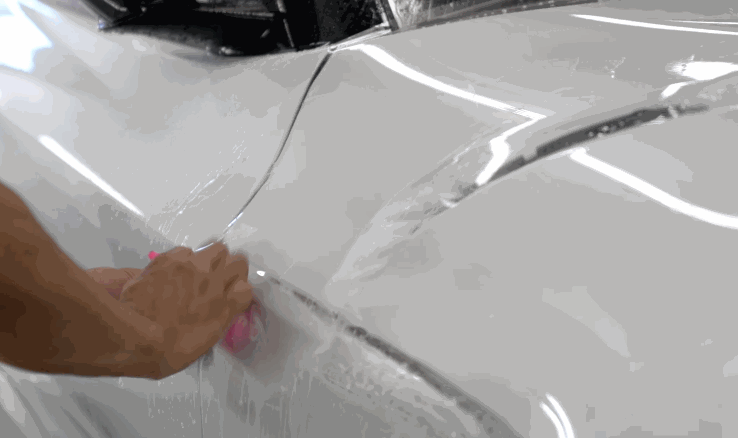
Seasonal Maintenance Tips for Martinez Drivers
Your PPF doesn’t need a lot—but it does need attention based on the season. Here’s how to adapt:
Spring & Summer
- Pollen control: Martinez is no stranger to yellow pollen clouds—clean your vehicle regularly to prevent buildup.
- Tree sap & bugs: Oak and pine trees leave sticky residue, and long drives through rural areas mean bugs galore. Clean these contaminants quickly to avoid staining.
Fall & Winter
- Falling leaves: Leaf tannins can stain if left too long—rinse them off before they sit.
- Road salt and grime: If you’re heading north toward Augusta or into the mountains, rinse your car thoroughly afterward.
Storage: If you can, park in a garage or use a breathable car cover during colder months to protect the film.
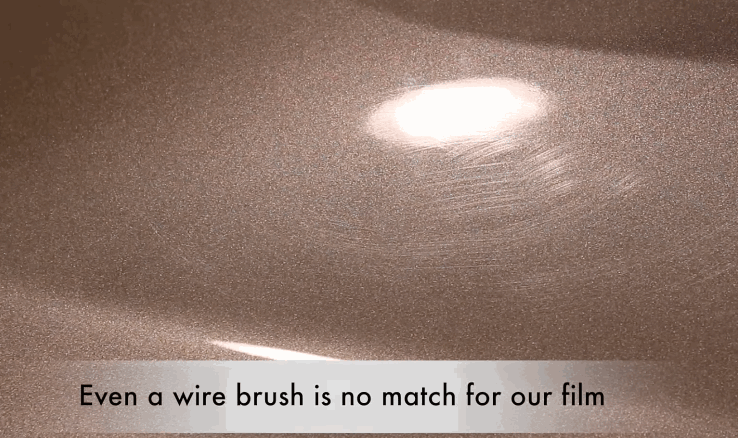
Long-Term Maintenance: What to Expect Over the Years
With proper care, high-quality Paint Protection Film can last between 5 and 10 years. But just like any protective layer, it has a lifespan. Here’s what to keep an eye on:
- Fading or yellowing (especially on white cars)
- Cracking or brittleness from long-term sun exposure
- Loss of gloss or clarity over time
We recommend coming in for a quick inspection every 6 to 12 months, especially if your vehicle is exposed to the elements daily.
Conclusion: Protecting Your Investment, One Wash at a Time
Paint Protection Film is one of the smartest investments you can make for your vehicle in Martinez. But like anything worthwhile, it needs a little care to deliver the results you expect. From avoiding harsh washes to keeping an eye on the edges, routine maintenance goes a long way.
If you ever have questions about your PPF—or you’re not sure whether something’s normal—don’t hesitate to reach out. At T. Banks Window Tinting, we’re always here to help. No pressure, no sales pitch—just honest advice from locals who treat your car like it’s our own.
T. Banks window tinting address
4.8 ⭐⭐⭐⭐⭐ 268 Google reviews Window tinting service in Martinez, Georgia

